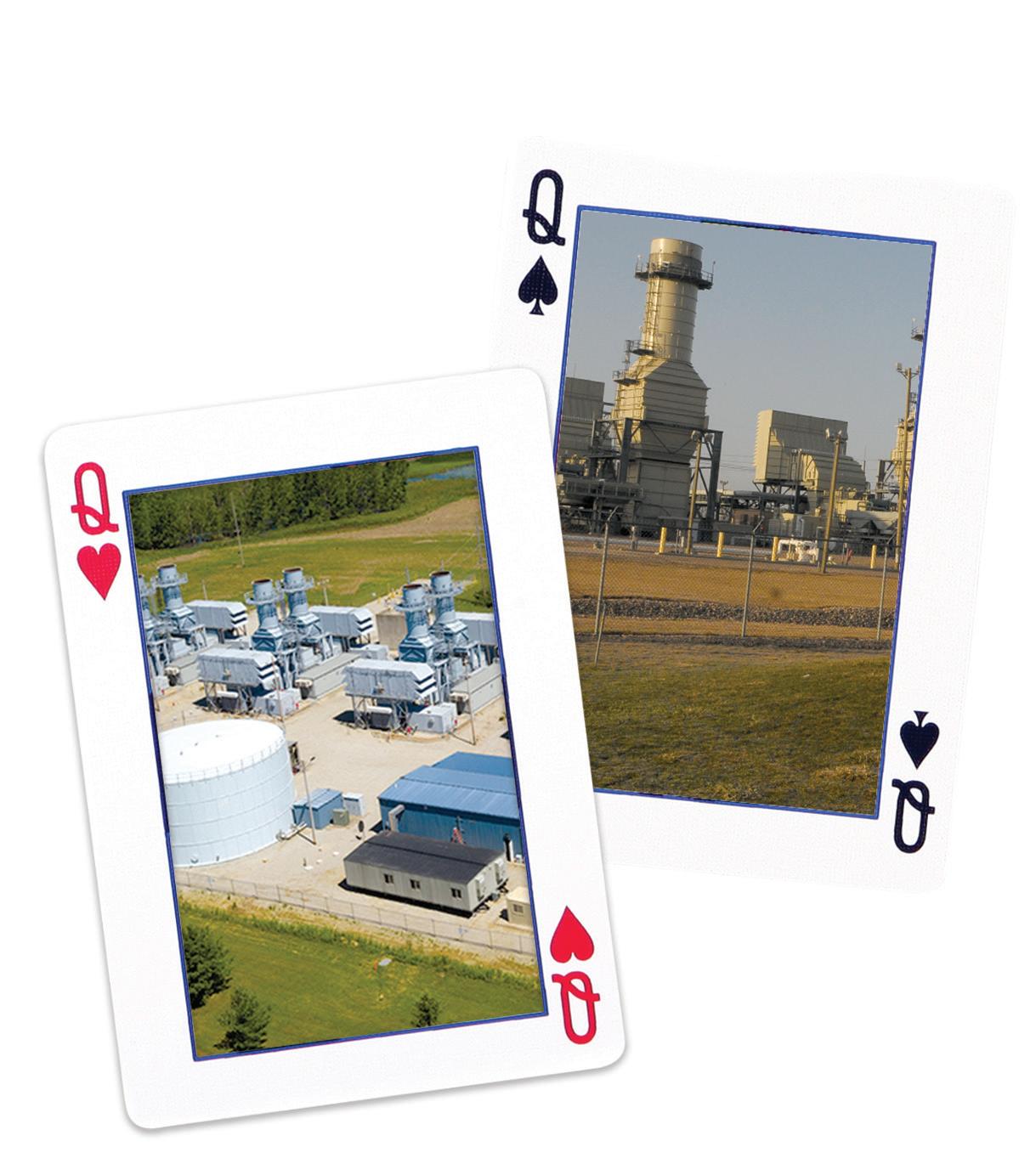
3 minute read
CO-OP PEOPLE
STACKING THE DECK
Having the strongest hand of generation sources leads to reliable, affordable energy.
BY REBECCA SEUM

In a game of cards, assembling the strongest hand means having the right card to play at the right time. Depending on the situation, the value of each card changes. It might be best to play a jack, to hold a queen for later, or to pull out that ace in the hole. That strategy can be used as an analogy to describe the way Buckeye Power, the generation and transmission provider for Ohio’s electric cooperatives, compiles and uses its generation sources. Providing safe, reliable, affordable power to more than 400,000 Ohio consumer-member households, businesses, and farms means having the strongest hand possible so that Buckeye Power can use the right source at the right time. Each generation source is equally valuable when it’s the right time to play it. Buckeye Power pursues an all-of-the-above generation strategy, taking into consideration cost, reliability, environmental impact, and more when deciding which cards to pick up and which ones to discard. From coal to natural gas to renewable sources, each one is an important part of keeping power flowing to our members. This month, we take a look at the cards in Buckeye Power’s hand.

THE ACE: Cardinal Power Plant
Cardinal Power Plant, in Brilliant, Ohio, on the Ohio River, is Buckeye Power’s main baseload source. “Baseload” refers to a plant that is built and designed to run all the time, day and night, seven days a week. That doesn’t mean it’s producing the same amount of energy all the time. Tom Alban, vice president, power generation, of Buckeye Power, says, “Baseload facilities vary their output. There’s a minimum demand and they run to meet that all the time, then ramp up during the day as needed.” This coal-fired plant consists
of three units: AEP owns Unit 1, and Buckeye Power owns Units 2 and 3 and manages all three units. Buckeye Power’s combined capacity at Cardinal is 1,210 megawatts. Buckeye Power has heavily invested in emissions control equipment on their units, making Cardinal Plant one of the cleanest power plants of its kind in the world.
Owned by the Ohio Valley Electric Corporation (OVEC), these two coal-fired plants were built in the 1950s to supply power to uranium enrichment facilities for the Department of Defense during the Cold War era. When that operation ceased, the facilities began supplying consumer electricity. Buckeye Power purchased shares of OVEC in the 2000s and now owns an 18% stake. At the time of purchase, Alban says, “our load was growing beyond our capability at Cardinal.” The OVEC shares became available at a time when Buckeye Power saw a need to increase capacity for future load requirements. The purchase also further stabilized long-term wholesale power costs. September: Environmental controls at Cardinal Power Plant

October: The next generation of community solar
Kyger Creek Clifty Creek
Baseload: A generation source that is designed and built to operate 24/7. Once turned on, it typically runs for weeks or months continually. Cardinal, Clifty Creek, and Kyger Creek plants are baseload resources.

Greenville Mone

TWO QUEENS: Robert P. Mone Plant and Greenville Generating Station
These two facilities, Buckeye Power’s natural gas peaking plants, are used only when needed to supply extra electricity, usually on the hottest and coldest days of the year. Each staffed by a team of only four and a shared plant manager, the plants are designed to be turned on and off with relatively short lead time. In fact, they can be up and running in only 10 minutes (as opposed to 24 to 48 hours to restart a coal plant that’s offline). The Mone plant was added to Buckeye Power’s hand in the early 2000s and Greenville was purchased in the mid-2000s. When weather projections demand, staffing schedules are adjusted so the plant will be ready to go the moment it’s needed.
Continued on page 6







